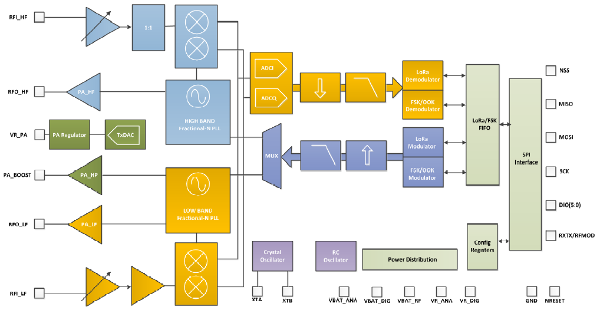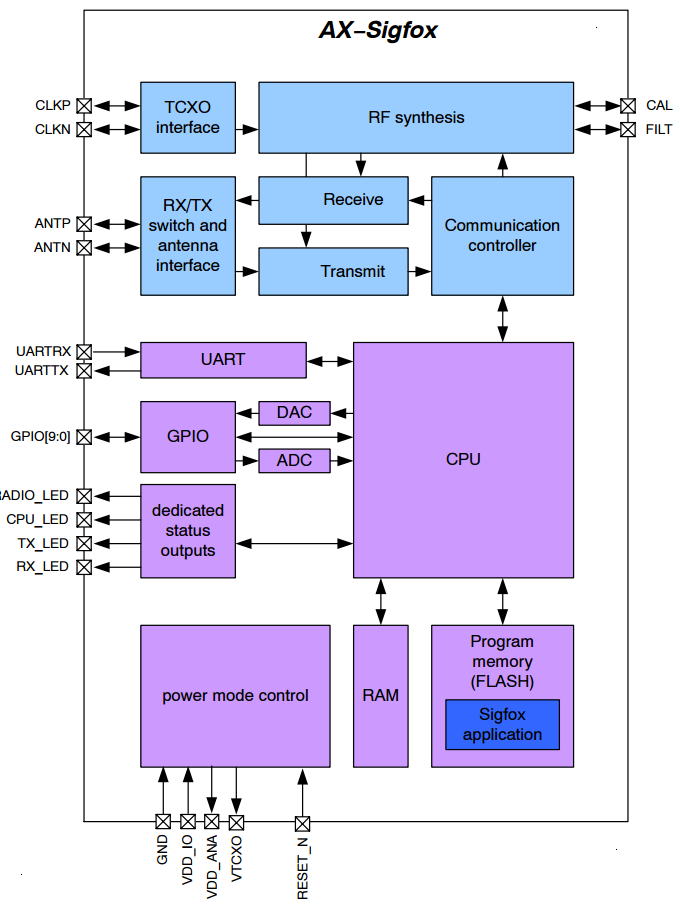In fact, the term IoT is still very controversial because there are things which have wireless communication capabilities, but not necessarily via the internet, such as consumer electronics, wearable devices and more that use Bluetooth and other connections.
The term IoT, therefore, should refer only to devices that communicate over the internet, but it is not what occurs. In fact, we believe that this term may soon break up.
So, taking into account that the device does not necessarily have access to the internet, but to a host that connects it to the internet or another device that has access to the internet, we can discuss the possible technologies better.
In practice, there is a number of technologies which provides connectivity between devices that classify in the IoT group over distances that are greater than those offered by Zigbee, Wi-Fi, and Bluetooth connectivity. They are those which make connectivity via cell phone networks and low-power wide area networks (LPWANs).
The goal of LPWAN developers is to deploy networks in urban areas as much as possible in the form of three solutions before wireless solutions deploy theirs:
EC-GSM (Extended Coverage) - It is a technology which allows GSM cell phone networks to be used for IoT applications through the addition of an appropriate software.
Variants of LTE (Long-Term Evolution) named in some LTE-M technical articles, since it is a general term which covers a variety of LTE specifications disinhibited to use in IoT connectivity.
5 G - the fifth generation of wireless connectivity which should arrive after 2020.
The competition between these technologies is great. Of course, wireless connectivity has a great advantage over other technologies. But there are many other study solutions that may be interesting in some applications.
For analysis purposes we can say that there are three types of IoT connectivity, classified according to the range: short-range, mid-range and long-range. These ranges cover the range that ranges from a few meters to several kilometers.
The short-range technologies currently used are those based on Bluetooth, Zigbee and Wi-Fi. Its ranges are measured in meters, which results in a small coverage area.
Medium-range technologies use wire carriers and LPWANs which can have reasonable ranges with good security and encryption capabilities. Other features can be added according to the application. However, the use of these solutions still has a relatively high price.
Long range. In this category we can even include access to satellites, which would mean the solution with the greatest range of all, but the cost is still extremely high. Who knows, with the use of a network of space satellites, the coverage of the solar system itself could be achieved, but certainly not for now, maybe for the next decades.
Discussing the advantages of the various connectivity solutions which fit into one of the three groups mentioned above is not a simple task, since beyond the scope other properties that may be even more important in specific applications should be taken into account. Let's look at some of them, based on the vast documentation available today on the internet.
The variants of LPWAN:
There are several types of LPWAN networks that are differentiated by the type of modulation they use. Thus, there are those which use narrow band, narrow band and wide band.
In the ultra narrow band, it takes advantage of the fact that narrowing the transmitted band, the noise floor increases which has a positive impact on the sensitivity of the receiver, on the range and also allows the use of lower power in the transmission.
However, the limitation is on data transmission capacity, which is limited to a very low rate besides the small data packages, in both one-way and two-way communications.
In the case of narrowband technologies, the advantages of the ultra-narrow band and the wide band are combined, which means an even greater degree in the speed and size of the data packages.
With the wide band, we can reach higher speeds, with these reaching channels as wide as 1 MHz, in which case we get the highest data rate possible.
In short, with narrower band we need less power for a certain range, but we lose in speed. With wider band, we need more power, but we can transmit more data.
Of course, by modifying transmission techniques, for example, with the use of spread spectrum and modulation, one can improve the performance of each of these technologies, which means that depending on the manufacturer we can have considerable differences in the products offered.
In addition, other factors such as network capacity, quality of service, reliability and especially safety should be taken into account when choosing a technology from a particular manufacturer.
All this leads us to analyze each of the available connectivity technologies, with a brief description of their main features.
The technologies:
LoRa - this is an acronym for Long Range consisting of the physical layer of a set of open standards for bidirectional devices sponsored by LorRa Alliance. The implementation of its network is called LoRaWAN and was developed by Semtech, which owns the rights to the chip that is the core of the technology, along with IBM Research and Actility.
LoRa technology uses spread spectrum modulation bursts, and a base station can typically cover hundreds of square kilometers, depending on local factors such as topography, obstacles, etc.
An example we can give is the Semtech SX1276 which is used in meter reading system in building automation, wireless alarms, security systems, industrial monitoring and control, and irrigation systems.
In Figure 1 we give the block diagram of this transceiver operating in the UHF range from 137 to 1020 MHz with various bandwidths, from 7.8 to 500 kHz.

The datasheet of this component can be accessed at:
http://www.semtech.com/images/datasheet/sx1276_77_78_79.pdf
With this product it is possible to have communication on several channels with data rate ranging from 300 b/s to 50 kb/s selected by the network server according to the output power of each IoT device.
Sympohny Link and Ensemble - This technology was developed by Link Labs as a proprietary variant brand of LoRa WAN which uses its physical layer but a different MAC architecture to achieve additional functionality.
The company's flagship product is the Symphony Link System which uses an 8-channel base station operating in the ISM range of 433 to 915 MHz and in the 868 MHz band used in Europe. The range reaches 10 miles.
See more at: http://www.link-labs.com/product/iot-software/
SIGFOX
This is a product of a company with the same name which provides to 19 countries covering an area of 1.2 million square kilometers, including major cities like San Francisco, California. Recently the company announced its intention to extend its coverage to more than 100 cities in the United States.
This system operates in the range of 815 to 915 MHz transmitting small data packages very slowly, at a rate of only 300 b/s. The modulation is BPSK (Binary Shift Keying). A feature of this technology is its long range being indicated for IoT applications which require small amounts of data.
The modulation is ultra-narrow band which allows a range of up to 1 000 km as a simple base station, and has a capacity to service up to 1 million IoT devices per station. Each message can be up to 12 bytes long and each device can only send up to 140 messages per day, which greatly limits the applications, but it really has practical interest in many areas. The first devices are unidirectional, but devices with bi-directional connectivity will soon be available.
Sellers can provide the intellectual property of the use for free. Many companies currently sell SIGFOX chipsets such as MOUSER ELECTRONICS, as well as antennas, evaluation and expansion boards, as well as other components. In Figure 2 we have a block diagram of this application.




